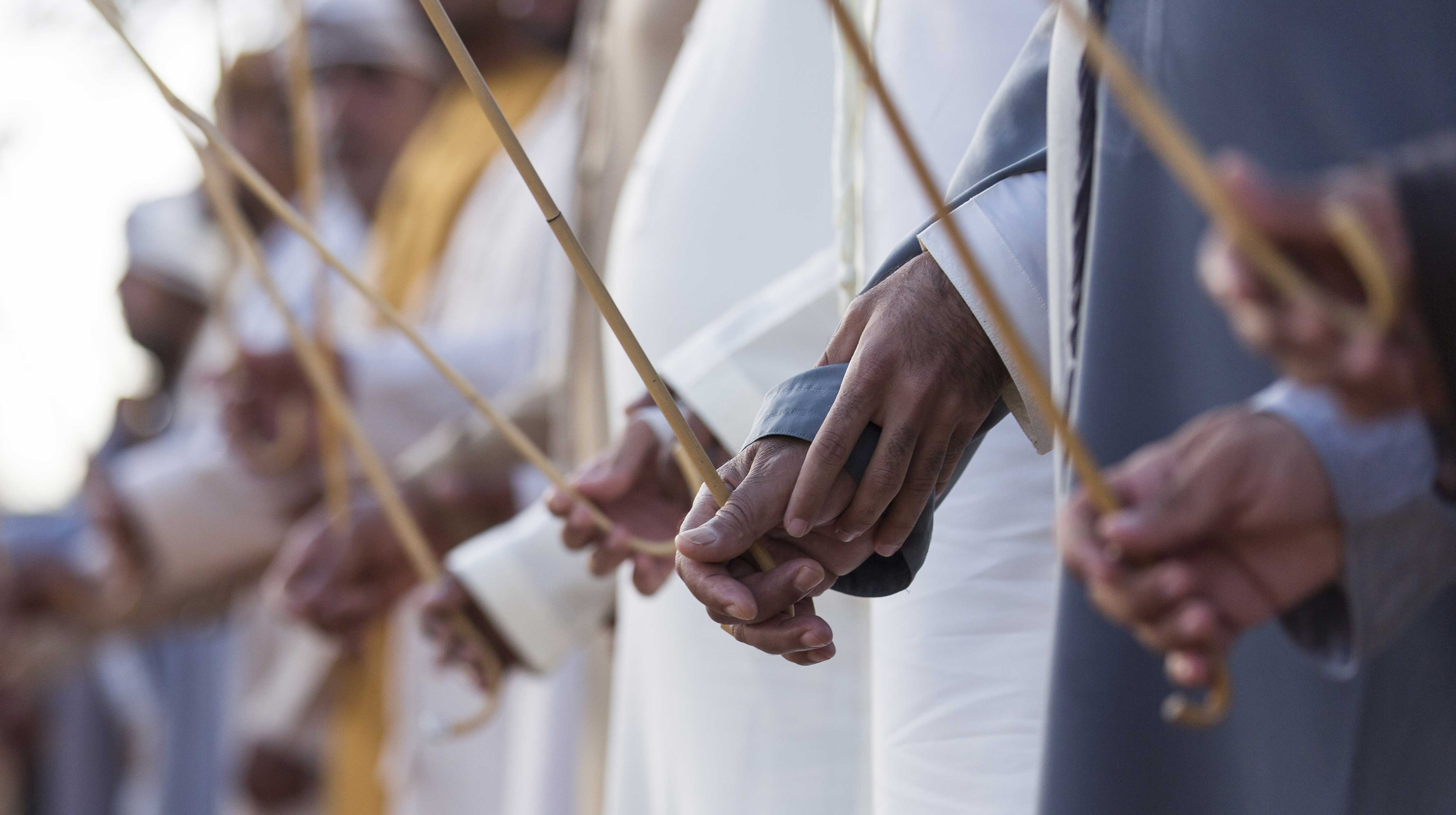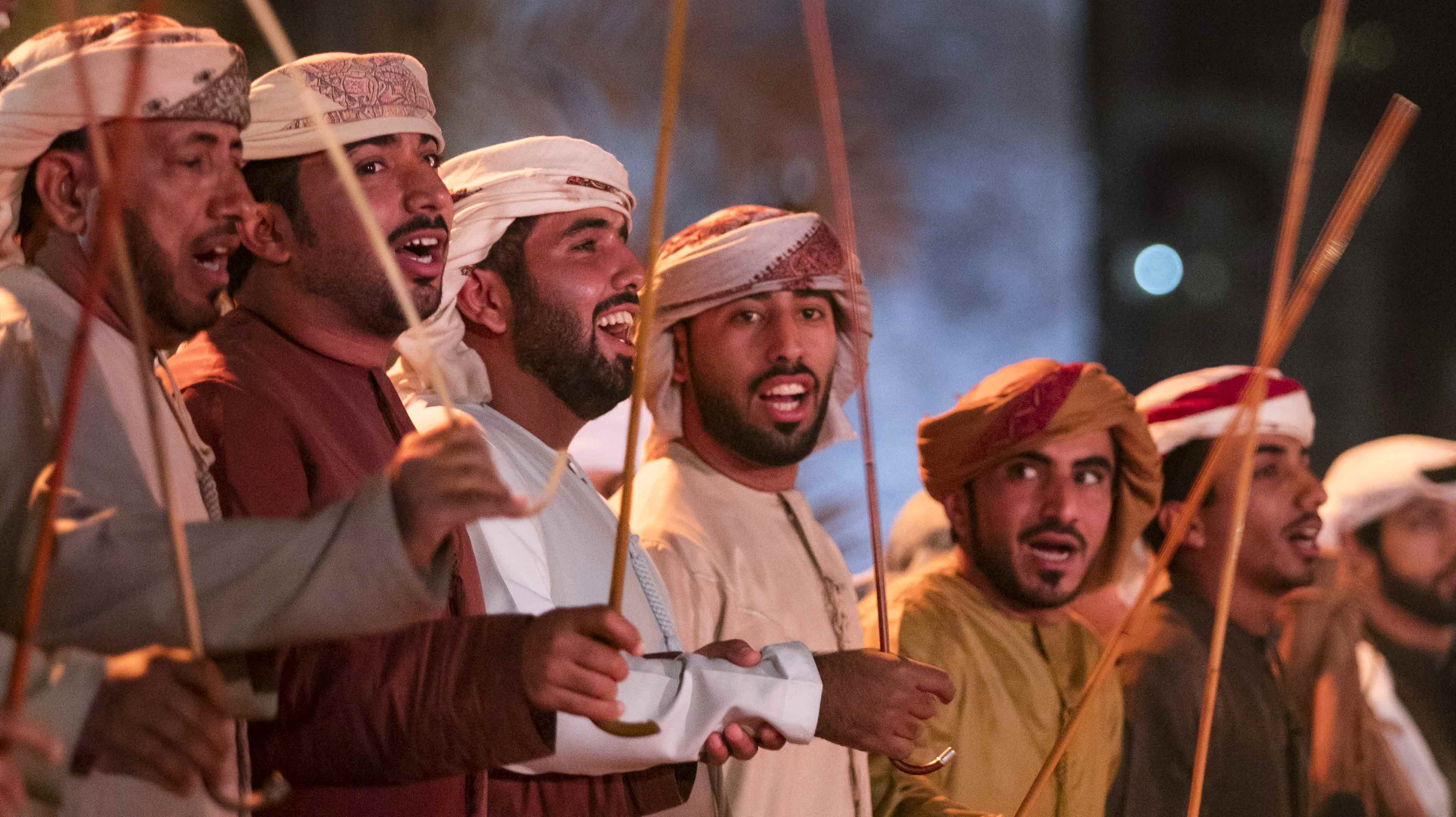
See All
Ayyala Dancing
An embodiment of Emirati values and heritage, the Al Ayyala dance sees male performers holding thin bamboo canes and moving to a steady rhythm of drums. Perhaps the most well-known traditional dance in the United Arab Emirates, Al Ayyala is performed by men and boys at weddings, national holidays and other celebrations.
A deep part of UAE culture, Al Ayyala exemplifies the ethos and gallantry of Bedouin (nomadic Arab people) life and reinforces the values of dignity and honour. Because it reflects the heritage of Emirati culture, the dance has become a symbol of national identity and union.
Al Ayyala sees two rows of 20 or more performers facing each other in a stylised battle scene, with the thin bamboo canes representing arrows or swords. The men in each row stand shoulder to shoulder, with their left hand on the back of the person to their left.

Dancers are positioned close together in rows to signify unity and cooperation.
Each row of performers makes alternating movements with their heads, shoulders, arms and canes to suggest victory or defeat – always moving in time to the beat of the drums. They also chant lines of verse, often from Nabati poetry (ancient Bedouin poetry), covering topics of valour and chivalry.
Al Ayyala has been practised for generations by people across the UAE, including both coastal and inland communities. The dance has such rich significance that it was added to UNESCO’s Representative List of the Intangible Cultural Heritage of Humanity in 2014.